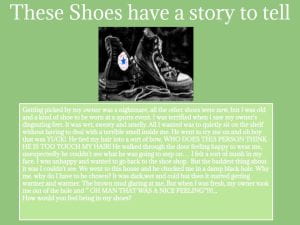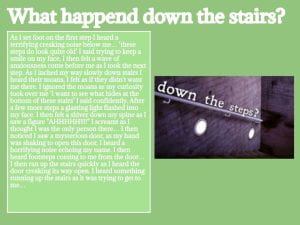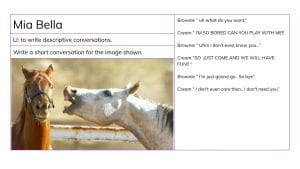LI: To use the 5 senses and personification to help us paint a picture with words. To understand that personification is to give an inanimate object human qualities

Our challenge was to co construct a text using personification and the senses to describe the story behind the shoes in this image. We sat back to back and weren’t able to talk to each other so we had to write one sentence at a time. Half way through Mrs Anderson challenged us to include a rhetorical question and a simile or metaphor, adjectives, adverb and a metaphor. Once we had completed this part of the challenge we joined together with another group to share our writing and make sure what we had written made sense. After that part of the challenge was finished we used the punctuation points game to see how much we used puncuation similie, adjectives, adverb, rhetorical question. We marked eachother’s punctuation against the points table. We then had a chance to check our own work against the points table. That was fun because every point our partners missed meant we could take a point off theirs.
I found this activity fun and enjoyable because we had a chance to collaborate and work together as a team.

